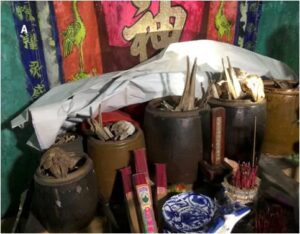This could have indeed been a headline for the organic cotton growers as good seeds are challenging to find and a well-adapted variety is even more elusive. But, not anymore!
Over ten years of committed breeding experiments resulted in  tangible success – the fruit of patience seems to be very sweet after all. The outcome is the recent release of two new organic cotton varieties made available to farmers. The varieties have been tested under local organic conditions and officially released by the State Seed Sub Committee of Madhya Pradesh. Interestingly, Madhya Pradesh is also the largest organic cotton-growing state in India. The Committee gave the green signal to the two non-GM cotton varieties for organic agriculture on 8th September this year. The released varieties are better yielding and meet industrial fiber quality requirements. Furthermore, both varieties demonstrated mild to moderate resistance to sucking pests and pink bollworm and the ability to adapt and grow in local conditions.
tangible success – the fruit of patience seems to be very sweet after all. The outcome is the recent release of two new organic cotton varieties made available to farmers. The varieties have been tested under local organic conditions and officially released by the State Seed Sub Committee of Madhya Pradesh. Interestingly, Madhya Pradesh is also the largest organic cotton-growing state in India. The Committee gave the green signal to the two non-GM cotton varieties for organic agriculture on 8th September this year. The released varieties are better yielding and meet industrial fiber quality requirements. Furthermore, both varieties demonstrated mild to moderate resistance to sucking pests and pink bollworm and the ability to adapt and grow in local conditions.
It was made possible through a tenuous and decade-long decentralized organic participatory breeding program coordinated by FiBL, Switzerland (The Research Institute of Organic Agriculture) and its multiple partners including universities, NGOs, and other institutions. They insisted on participatory breeding, amalgamating the formal and farmer-managed informal seed systems. It also reserves the potential to scale up decentralized breeding from non-GM varieties meeting the fiber quality requirements of the textile industry. It worked under a formal and appealing name, ‘Seeding the Green Future’ or SGF for the collaborative activities.Their efforts resulted in the first-ever cotton varieties bred under organic conditions. The project is primarily aimed at organic cotton breeding programs in a participatory manner to directly support smallholder cotton farmers who are often constrained by seed crises. It also ensured the availability of cotton seeds free from genetic modification to improve the integrity of the organic cotton value chain. One of the plant breeders and co-leader of SGF emphasized the conservation and use of genetic diversity and the avoidance of GM contamination by using the native, robust desi cotton varieties. These native species are morphologically distinct compared to the GM-hybrids and with different chromosome numbers making cross-pollination extremely rare. They derived the varieties from two different cotton species, Gossypium arboreum, traditional or desi cotton, and G. hirsutum, American upland cotton. The non-GM desi Cotton variety, RVJK-SGF-1, has been found to be 21.05% superior in seed cotton yield over the benchmark variety. The variety also has a good fiber length, high fiber strength, and matures in 144-160 days. On the other hand, the non-GM American cotton variety, RVJK-SGF-2, exceeded the benchmark by 21.18% for seed cotton yield and matures in 145-155 days. On an industrial scale, it has long fibers and high fiber strength. So, thanks to the longish ardor and perseverance of the researchers, we anticipate that the two new varieties will bring smiles to the farmers who have already been battered by countless woes.
Image Courtesy: By Bubba73 (Jud McCranie) – Own work, CC BY-SA 4.0,
https://commons.wikimedia.org/w/index.php?curid=44304832 AND Jud McCranie – Own work,CC BY-SA 4.0, https://commons.wikimedia.org/w/index.php?curid=44839821
Collector: Avik Ray


